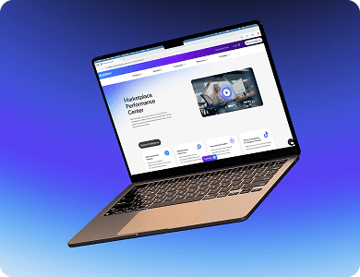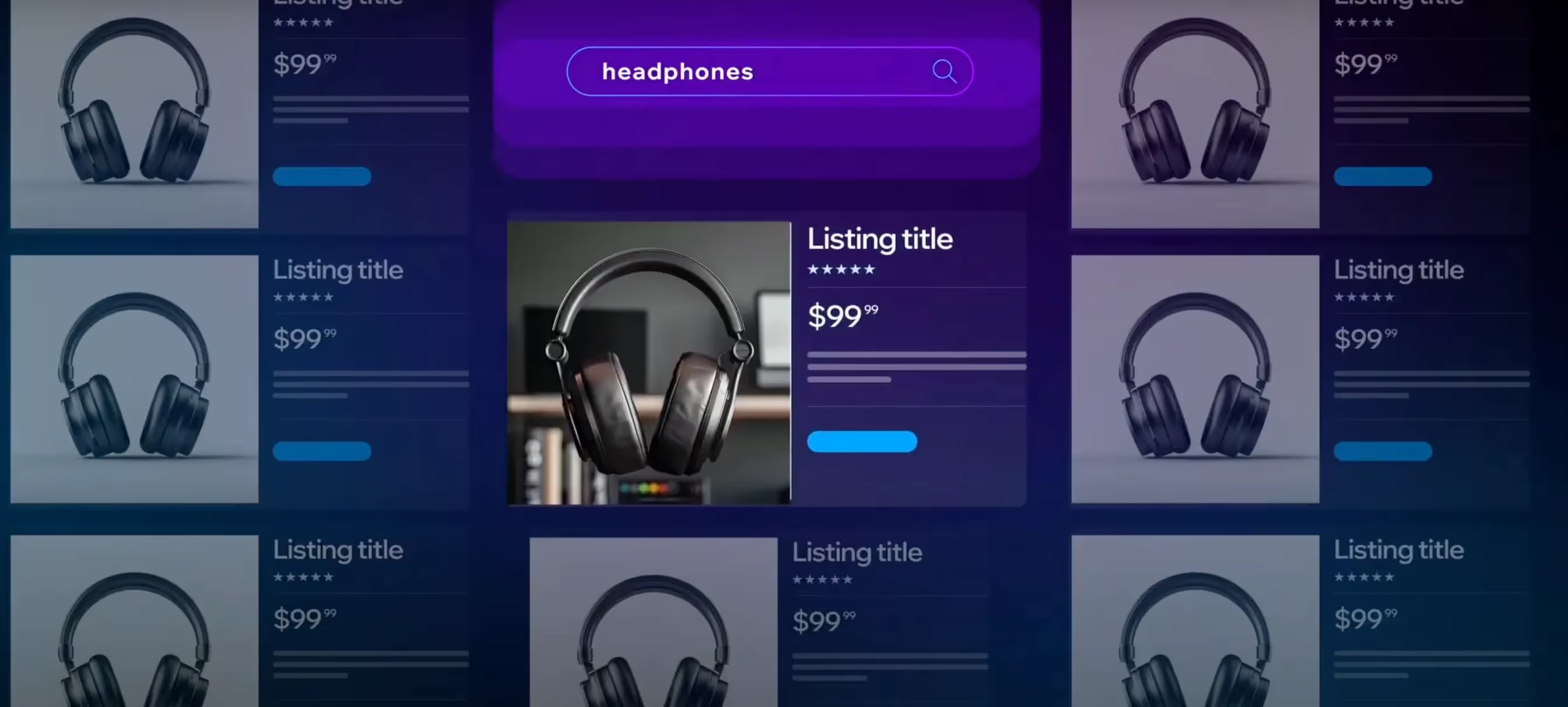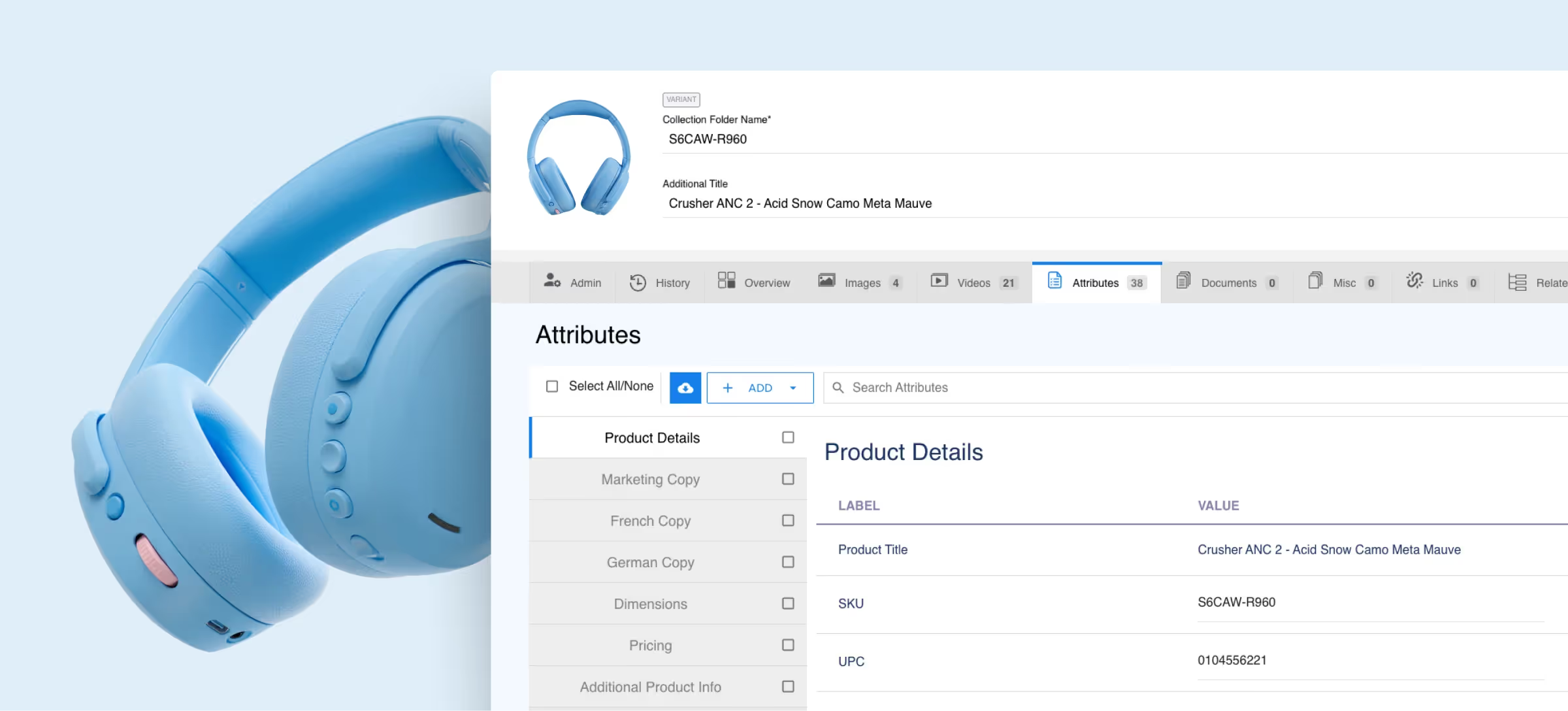Digital Asset Management (DAM) for Retail
Digital Asset Management (DAM) is like the mission control for your brand’s content, helping you organize product images, videos, and other marketing materials more efficiently. It helps your teams move faster, stay on-brand, and deliver a seamless shopping experience across every channel.
What Is Digital Asset Management for Retail?
Today’s retailers juggle thousands of products, promotions, and campaigns across numerous channels. Keeping all that digital content organized is no small task — which is why digital asset management is so essential.
DAM solutions are built to organize, store, and distribute everything from product images and videos to campaign graphics and brand guidelines. Tailored for the retail sector, it supports large, fast-moving product catalogs, ensures brand consistency across channels, and empowers teams to find and repurpose assets quickly.
Whether you’re launching a seasonal campaign, updating online storefronts, or coordinating across teams and regions, DAM allows you to effortlessly streamline workflows and accelerate time-to-market.
Customer expectations are higher than ever, and retail brands need tools to help deliver the polished, up-to-date content consumers demand. DAM offers the structure to do just that, all while freeing up teams to focus on what they do best.
Why Retailers Need DAM
Retail is one of the fastest-moving industries — and if your content can’t keep up, it hurts your bottom line. Delayed campaign deliveries, inconsistent branding, and missing assets can snowball quickly into more significant business challenges.
A powerful DAM system takes these problems head-on, helping you stay organized, consistent, and agile. Here’s how DAM solves some of the most common pain points retailers face.
Scattered Assets
Are your marketing materials buried in email threads or scattered across multiple drives? DAM centralizes everything into one place, so you can find, update, and share assets with ease.
Inconsistent Branding
If your teams are working from outdated or off-brand visuals, your campaigns will suffer. DAM ensures every department uses the latest approved assets, keeping branding sharp and unified.
Slow Time to Market
With DAM, you never have to manually hunt down assets or re-create lost files again. Instead, you’ll speed up time to market by streamlining access and automating version control.
Collaboration Bottlenecks
Retail departments often work in silos, meaning approvals and handoffs drag out longer than they should. DAM brings all teams together in one system, improving visibility, workflows, and real-time collaboration.
Channel Overload
You’re delivering content across websites, apps, marketplaces, social, and more. Easily meet the varying requirements of each platform with DAM, which adapts assets for every channel quickly and efficiently.
Compliance Issues
Using outdated product claims and missing required disclaimers can lead to costly mistakes. Make sure you never overlook compliance with DAM systems that track asset versions, usage rights, and expiration dates.
Benefits of Implementing DAM in Retail
Implementing a DAM solution does more than tidy your asset library. It also unlocks immense business value. From boosting speed to elevating your brand, here’s how DAM delivers a significant return on investment.
Improved Operational Efficiency
DAM decreases the time your teams spend searching for files or creating new versions of old assets. Working from one centralized hub, everyone can access, share, and update content effortlessly, meaning there’s more time for higher-value work.
Faster Product Launches
When teams can easily find and repurpose assets, everything goes more smoothly. Campaigns come together faster, go-to-market timelines significantly accelerate, and workflows are more streamlined.
Enhanced Brand Consistency
DAM marketing ensures all stakeholders use the right visuals and messaging at the right time. Your brand looks more unified and distinctive, giving you a competitive advantage that catches your customers’ attention and fosters trust.
Streamlined Content Distribution
From ecommerce sites to in-store displays and social media, DAM helps retailers quickly adapt and distribute assets to multiple platforms. It simplifies publishing while ensuring assets meet requirements for every channel.
Leverage Analytics for Customer Insights
DAM empowers you with reporting features that track asset usage and performance. You can leverage this data to fine-tune campaigns, better understand customer preferences, and invest more in content that converts.
Ready to simplify your content management and supercharge your retail operations? Check out Pattern’s DAM solution and drive results across your business.
Key Components of DAM for Retail
A strong DAM supports the complex needs of your retail business, helping you stay organized, secure, and efficient. Here are some of the key components — and why they matter.
Centralized Product Content
Retail product images, descriptions, videos, and other marketing materials are always evolving. Storing and managing everything in one place ensures seamless workflows, fewer delays, and fewer errors.
Secure Access and Version Control
You’re working with countless partners and teams, and controlling access is critical to security. DAM systems give you role-based permissions and version control so only the right people can see or edit content.
Seamless Integration with Existing Tools
Between your ecommerce platform, PIM, CMS, and creative platforms, managing every tool can get messy. DAM connects these systems for smooth integration and synced, up-to-date content across every touchpoint.
DAM Best Practices for Retailers
Rolling out a DAM can completely transform your business for the better. But success depends on more than just the technology. Here’s how to optimize your digital asset management workflow for maximum effectiveness.
1. Start with a Clear Strategy
Define your goals before shopping for a DAM solution. Are you seeking speed, brand consistency, omnichannel delivery — or all of the above? Knowing your “why” will guide everything from vendor selection to user training.
2. Get Stakeholders Involved
Getting early input from marketing, ecommerce, creative, and IT teams ensures the system works for everyone and drives higher adoption across departments.
3. Audit and Organize Existing Assets
Before migrating content, clean house. Tag, categorize, and retire outdated assets to avoid clutter and ensure your new DAM starts fresh and functional.
4. Focus on Metadata and Tagging
Metadata makes DAM more powerful. Be consistent with your tagging system so assets are easy to find at any time.
5. Train Your Teams
Even the best DAM system falls flat without team buy-in. Provide continuous training to help users understand how to upload, search, and collaborate within the platform.
6. Plan for Governance
Set rules for asset usage, naming conventions, version control, and user permissions. Strong governance keeps your system clean, secure, and scalable.
7. Monitor and Optimize
Track system usage, asset performance, and user feedback. Use these insights to refine workflows, improve content strategy, and ensure continued value.
Take Your Retail Operations to the Next Level
Ready to quickly organize and share critical marketing content across teams?

Frequently Asked Questions
What types of digital assets can retailers manage using DAM?
Retailers can manage a wide range of assets using DAM, such as product images, videos, marketing banners, brand guidelines, and user-generated content. They can also manage documents like packaging files, pricing sheets, and campaign briefs.
Is DAM suitable for small to medium-sized retail businesses, or only large enterprises?
DAM isn’t just for big retailers. There are many scalable solutions for small and mid-sized businesses, helping them streamline content workflows, stay on-brand, and compete more effectively across digital channels.
How secure is Digital Asset Management software for retail?
DAM systems provide robust security features like role-based access, encryption, and audit trails. These features protect sensitive assets and limit accessibility to only authorized users, which is critical for retail brands handling high volumes of content.
Can DAM integrate seamlessly with existing retail software like CRM and ERP systems?
Yes, DAM platforms can integrate with tools like CRM, ERP, PIM, CMS, and ecommerce platforms. This enables smoother workflows and real-time content syncing across the retail tech stack.
Does DAM software require significant employee training?
Most DAM systems have user-friendly interfaces, making employee training fairly straightforward. Still, some upfront guidance is important to ensure teams understand best practices for tagging, searching, and collaborating within the platform.


.jpg)









